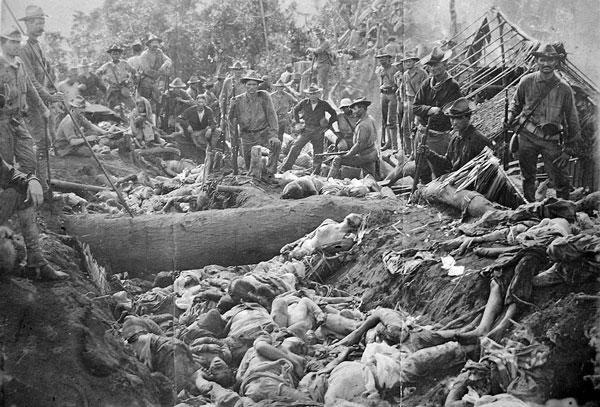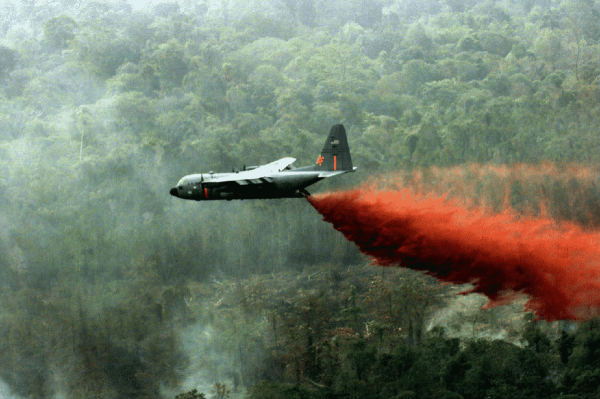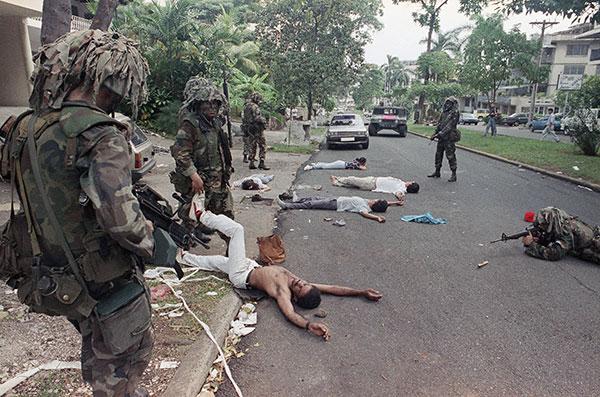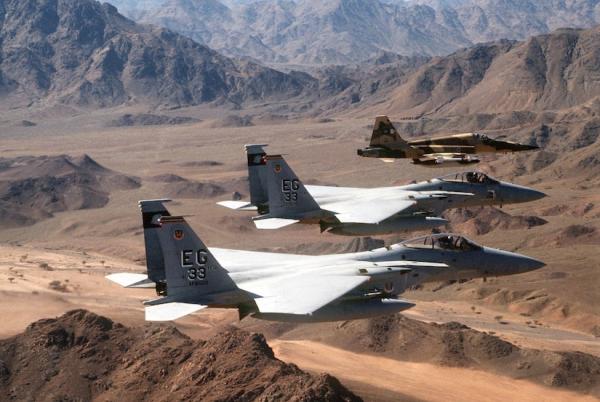In light of the bellicose (warlike) U.S. accusations against China sparked by a large Chinese balloon, and in light of the way in which the U.S. media and educational system hide the actual truth about U.S. wars, past, present and future, here is a short history of some of the pretexts (false justifications) used to gear up the U.S. population for past military conflicts.
1898: “Remember the Maine” and the Spanish-American War
The U.S. battleship Maine blew up on February 15, 1898 in Havana harbor—when Cuba was still one of Spain’s colonies. There was never any evidence that Spanish forces were involved, but this did not stop pro-war newspapers in the U.S. from publishing front-page drawings “showing” how the Spanish forces had attached mines to the bottom of the ship.
By April of that year—still trumpeting “Remember the Maine!”—the U.S. government declared war on Spain, launching the Spanish-American War to seize the valuable colonies of Cuba, Guam, the Philippines and Puerto Rico. This war raged until 1902, not only against the Spanish empire, but also against the native populations of these colonies.
It is estimated that in the Philippines alone, between 250,000 and one million people were killed through this U.S. war for greater empire—in combat and through disease and famine. The savagery of the U.S. war was captured in pictures of American soldiers standing on mounds of the skulls and bones of Filipinos they had massacred, piled in mass graves.
For more see these from the revcom.us American Crime series, “Case #59:The U.S. Invasion, Occupation, Domination, and Plunder of Cuba: 1898 to 1959” and “Case #58: U.S. Conquest of the Philippines 1899-1902.”

The bodies of Moro insurgents and civilians killed by U.S. troops during the Battle of Bud Dajo in the Philippines, March 7, 1906. According to one account, U.S. troops massacred at least 600 men, women and children in this one battle. Corpses were piled five deep, and many of the bodies were wounded multiple times. Photo from The National Archive.
1964: The “Gulf of Tonkin Incident” and the Indochina Wars
In August 1964, two U.S. warships were off the coast of North Vietnam supporting South Vietnamese raids on the North’s coast—a deliberate and illegal provocation by the U.S. This was in the period after the French empire had been driven out of the Indochina region (Vietnam, Laos and Cambodia) and the U.S. was trying to take its place. The U.S. already had “military advisors” with the pro-U.S. regime in South Vietnam but was looking for justification for all-out war against the Vietnamese national liberation forces.
On August 2 and again on August 4, the U.S. ships claimed to have been shelled by the North Vietnamese. The first incident may have happened, the second was almost certainly made up, but in any case the North was legitimately responding to a U.S.-backed attack. But the U.S. absurdly claimed that these incidents were “unprovoked attacks,” and treated them as an act of war.
Nobody in the American mainstream media seriously challenged the story, much less asked what U.S. warships were doing off the North Vietnamese coast. The U.S. Congress quickly passed the “Gulf of Tonkin Resolution,” which authorized the massive deployment of U.S. troops into southern Vietnam—within months there were half a million U.S. troops in Vietnam. The war unleashed lasted until 1975 and led to the deaths of millions of people just in Vietnam, and millions more in Cambodia and Laos.
As part of this war, the United States sprayed 19.5 million gallons of poisonous chemical Agent Orange on Vietnam. The goal was to deny Vietcong fighters and North Vietnamese troops forest cover and food supplies. The Vietnamese Red Cross estimates that three million Vietnamese have been affected by dioxin, including at least 150,000 children born after the war with serious birth defects.
For more on the U.S. crimes in Vietnam, see: “From a Vietnam War Vet: We Were Baby Killers for U.S. Imperialism”; “American Crime Case #96: Vietnam, March 16, 1968—The My Lai Massacre,” “American Crime Case #47: The Bombing of Cambodia, 1969-1973.”

The Vietnam Red Cross estimates that three million Vietnamese have been affected by dioxin, the toxic chemical in Agent Orange. Above plane spreads Agent Orange. Below, Victims of devastating effects of Agent Orange. Photo: AP

1989-90: The U.S. Invasion of Panama
On December 20, 1989, the U.S. military invaded Panama with 27,684 troops and 300 aircraft, killing thousands of civilians and removing Manuel Noriega and his Panamanian Defense Force (PDF) from power. The invasion was named “Operation Just Cause” by U.S. Secretary of Defense Dick Cheney.
The U.S. pretext for the invasion was that Noriega, a dictator, was threatening the lives of 35,000 Americans living in Panama after a U.S. Marine stationed there was killed, and that Noriega was a “drug trafficker” who threatened “democracy.” In reality, the U.S. knew that there was no concerted effort by Noriega to endanger U.S. citizens in Panama. And U.S. President George H.W. Bush and other officials knew that Noriega had been a CIA operative since 1967, providing the U.S. with valuable information about Cuba and anti-U.S. movements in Latin America. The U.S. knew of and made use of Noriega’s drug dealing. Under the previous U.S. president, Ronald Reagan, the CIA paid Noriega $200,000 per year to allow the U.S. to ship weapons purchased in Poland through Panama into Nicaragua to the U.S.-backed Contras (armed right-wing groups), who were fighting the Sandinista government that the U.S. wanted to overthrow.
The real agenda for the U.S. was control of the Panama Canal in service of its imperialist domination of Latin America and its global dominance. By 1989, the U.S. rulers felt Noriega had become unreliable and that his actions threatened their interests, particularly at a time when administrative control of the strategic Panama Canal was formally being shifted from the U.S. to Panama.
The Central American Human Rights Commission reported after the U.S. invasion, “The most devastated civilian neighborhoods—such as Chorrillos and San Miguelito—were extremely poor, densely populated areas. Half of the neighborhood of Chorrillos—which had a pre-invasion population of approximately 25,000—was literally destroyed by U.S. troops and civilian residents were victims of direct attacks.” Survivors of the invasion called what happened to Chorrillos “Guernica” and “Little Hiroshima.”
It has been estimated that 3,000 to 6,000 Panamanians lost their lives in the U.S. invasion. Foreign journalists were also killed in the invasion.
For more, see "American Crime Case #43: The U.S. Invasion of Panama, 1989-1990.”

On December 20, 1989, the U.S. military invaded Panama with 27,500 troops and 300 aircraft, killing thousands of civilians. Photo: AP
1990: “The Kuwait Incubators” and the First Persian Gulf War
In 1990, as the U.S. was gearing up for the first Gulf War, George H.W. Bush’s (“Bush I”) invasion of Iraq, the American mainstream news was inundated with false “testimony” of a 15-year-old girl about Iraqi troops who invaded Kuwait, a country bordering Iraq. She claimed she witnessed Iraqi soldiers yanking babies out of incubators at a hospital in Iraqi-occupied Kuwait, leaving them on the floor to die and stealing the incubators to send back to Iraq. This came at a time when there were large demonstrations across the U.S. against Bush’s war moves, and strong opposition to war against Iraq. Bush retold the incubator story in a speech in January 1991, shortly before he launched the bombings on Iraq, which the U.S. called “Operation Desert Storm.”
But, as John Stauber and Sheldon Rampton recount in their book Toxic Sludge Is Good for You!: Lies, Damn Lies and the Public Relations Industry (Common Courage Press, 1995), the incubator story was a complete hoax. It was cooked up by a public relations firm hired by the reactionary oil kingdom of Kuwait. But this lie served to justify a war that killed 200,000 Iraqis.
For more, see American Crime “Case #32: The 1991 Persian Gulf War—‘Operation Desert Storm’”

In her testimony, Nayirah falsely testified that after the Iraq invasion of Kuwait she witnessed Iraqi soldiers take babies out of incubators in a Kuwaiti hospital, building support for U.S. rationale to support Kuwait. Photo: WikiCommons
2003: Nonexistent “Weapons of Mass Destruction” and the Second Gulf War
In 2001, the U.S. government launched a massive propaganda campaign to justify war against Iraq. President George W. Bush (Bush II) included the lies as a big part of his 2003 State of the Union speech before Congress. Vice President Cheney pushed the CIA to produce false reports that Iraq had chemical, biological, and nuclear weapons of mass destruction (WMDs) and ties to Al Qaeda. In a major speech to the UN Security Council, complete with enlarged photos and other graphics, Secretary of State Colin Powell claimed to present “evidence” of WMDs in Iraq—which all were proved false. Nearly every member of Congress repeated or went along with the lies. Bush and the U.S. rulers declared that all this posed a “grave and growing danger” to the Middle East and to the U.S. itself. The WMD lie was sustained and promoted by all mainstream U.S. media, with the New York Times playing a particularly central role. Justified by the WMD lie, the U.S. launched a blitzkrieg-like invasion of Iraq.
After the U.S. invasion and all the deaths and destruction that resulted, it became undeniably clear that none of the U.S. pretexts for the war were true.
Thousands of Iraqi civilians were killed and wounded in the invasion, and the U.S. occupation that followed led to even worse. Iraq Body Count has documented between 168,239 and 187,378 civilian deaths from violence, and total violent deaths including combatants at 251,000 from 2003 through September 2016. Other studies of the direct and indirect toll of the war (due, for example, to the destruction and disruption to water and power systems, health care and food production) tell of even greater horrors: 655,000 dead, according to a 2006 Lancet study; one million, according to a 2008 Opinion Research Business study; and other current estimates reaching 1.2 to 1.4 million. More than 4.2 million Iraqis have been injured and at least 4.5 million have been driven from their homes.
For more, see American Crime “Case #70: ‘Operation Iraqi Freedom,’ 2003”

Operation Desert Storm: U.S. aerial and naval bombardment of Iraq and Kuwait began on January 17, 1991 and continued for six weeks. Photo: Wikipedia

